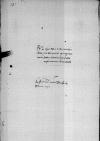Reverendissimo in Christo patri et domino, domino ⌊Mauricio Dei gratia episcopo Varmiensi⌋, fratri et amico carissimo ac plurimum observando.
Eas, quas illustrissimus dominus ⌊dux Prussiae⌋ ad Dominationem Vestram Reverendissimam et ad me dedit et quae ad illa Dominatio Vestra Reverendissima rescripsit, accurate legi. Invenio Illustrissimam Dominationem ⌊eius⌋ ex novissimo meo responso ansam cepisse, ut a ⌊serenissima maiestate regia⌋ pro subsidio ⌊electi regis Daniae⌋ pecuniae, quae ⌊Marienburgi⌋ sunt, peterentur. Sic enim ⌊illi⌋ obiter per modum incerti consilii scripseram, quemadmodum et reverendissimo domino ⌊episcopo Plocensi⌋, sicut ea legit Dominatio Vestra Reverendissima ex litterarum mearum exemplo, quod nuper ⌊frater meus⌋ Dominationi Vestrae Reverendissimae ostendit. Neque aliud pro rudi mea consideratione video, si necessitas aliqua ingrueret , quam quod ⌊serenissima maiestas regia⌋ esset pro eiusmodi pecunia roganda, qua hostes, quanto possemus diutius et remotius, a nobis arceremus. Cum autem Dominationi Vestrae Reverendissimae expedire non videtur, ut nos stantibus ut nunc rebus quippiam a ⌊serenissima maiestate regia⌋ postularemus, id ipsum illustrissimus dominus ⌊dux⌋ per se facere poterit commodius, quandoquidem pecuniae sunt regiae, quas in quoscumque voluerit, usus serenissima maiestas regia potens est convertere hocque illi in ea, qua voluit Dominatio Vestra Reverendissima, sententia respondendum duxi. Quod ⌊Gdanenses⌋, quia prius non contribuerint, iam per me induci debeant, ut resarciant omissa, in me non suscipio, pro illis quidem certis ductus rationibus rogatus scripsi, verum pro illis nihil umquam sum pollicitus etc. Utcumque res habent Danicae, nobis omnino non sunt contemnendae, quod si ⌊electus rex⌋ sic desertus a concepto per ⌊comites palatinos Rheni⌋ reprimetur, hostem habebimus certo in foribus, quem domi (quod omen procul absit) maiori impensa et periculo sustinebimus, si illum hoc tempore foris leviori sumptu et tutius remorari neglexerimus. Sed ista fortassis pro modulo tenui mei intellectus scripta liberius non aliorsum accipi velim, quam meae in Dominationem Vestram Reverendissimam observantiae meliorique Dominationis Vestrae Reverendissimae iudicio convenit. Cui et aetatem quam diutissime incolumem precor, et me ex animo commendo.

